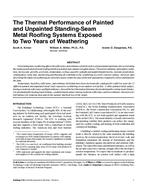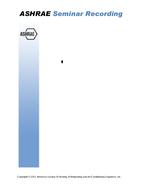The introduction of air, preconditioned with a renewable low exergy source, into a building envelope has the potential of reducing its energy use. Structures incorporating dual-wall construction in order to accomplish this have been shown to be effective under certain conditions, but have not been proven to be economically practical in most situations. This paper reexamines the technology and describes a practical method in which it might be applied economically. A dual envelope is created with the addition of an inexpensive, light-weight skin over a standard wood-frame construction. Air preheated through the ground and passed between the skin and the wall will provide a temperature buffer within the wall, effectively decreasing the temperature differential across it. A portion of energy lost through the exterior facade is now supplied from the ground rather than from the interior heating source. A geosolar storage reservoir provides enhanced conditioning of the interstitial air. The addition of the sheathing that forms the exterior skin increases the total R-value and thus the energy efficiency of the building. Another benefit is that of the positive pressure in the air passage: any infiltration into the room is at ground rather than at outdoor temperature, reducing convective heat losses.
The geothermal component of this air introduction to the wall may be enhanced by increasing the ambient temperature of the earth with unwanted heat absorbed by the roof of the structure during the summer months. The roof of the structure is fitted with narrowly spaced runs of PEX (cross-linked polyethylene) pipe just below the roof surface. Water circulating between these coils and the ground serve to transfer summer heat into the ground while cooling the building. A horizontal blanket of insulation, buried around the perimeter of the building allows heat removed from the roof to be retained for winter use. In addition, cool air from the ground can also be circulated between the walls and the exterior skin during the summer to keep the structure cool. In order to establish a proof of concept of integrating this annualized geosolar exergy storage technology with the ground-coupled dynamic wall, a prototype structure has been constructed in central New York. Preliminary results are encouraging.
Citation: ASHRAE Transactions, Volume 119, Part 1, Dallas, TX.
Product Details
- Published:
- 2013
- Number of Pages:
- 11
- File Size:
- 1 file , 3.4 MB
- Product Code(s):
- D-DA-13-004


